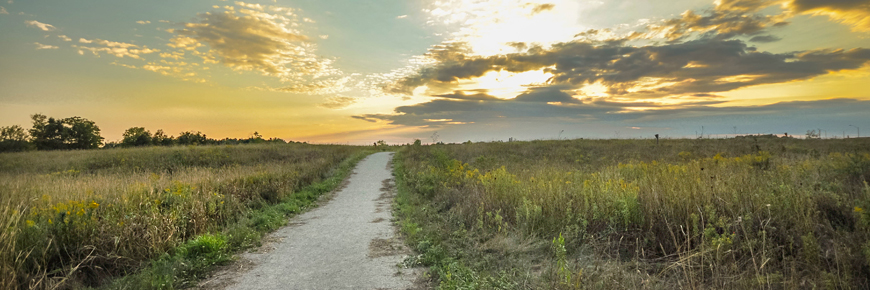
Meadow habitat
Rouge National Urban Park
Open meadows throughout Rouge National Urban Park are dotted with colourful wildflowers in the spring, summer and early fall, and provide habitat for many species of animals.
Meadows are large, open fields that contain a variety of grasses and non-woody plants. Natural disturbances such as fire and grazing by animals have historically played an important role in maintaining meadow habitats. Without these disturbances, meadows eventually transform into thickets and forests as woody shrubs and trees begin to take hold. Meadows can be found in several areas of the park, including the Vista Trail and the Bob Hunter area. Some of the meadow habitats in the Rouge exist under the hydro corridors that run through the park. These corridors must be maintained as open meadows or low thickets to prevent tall trees from damaging the power lines. This creates lots of open areas filled with colourful wildflowers and butterflies throughout the spring and summer.
Like other habitat types within the park, meadows are important to the overall health of the park ecosystems. For example, the long roots of native grasses help to minimize soil erosion and flooding. Meadow areas also contribute to the park’s biodiversity. They are particularly important for native pollinator species, supporting a wide variety of bees, beetles, flies and butterflies that are attracted to the wildflowers that grow in these areas.
Many birds also utilize meadow areas, including:
- Goldfinches
- Bluebirds
- Kingbirds
- Swallows
- Sparrows
You may also come across white-tailed deer foraging in the park’s open meadow habitats.
Related links
- Date modified :